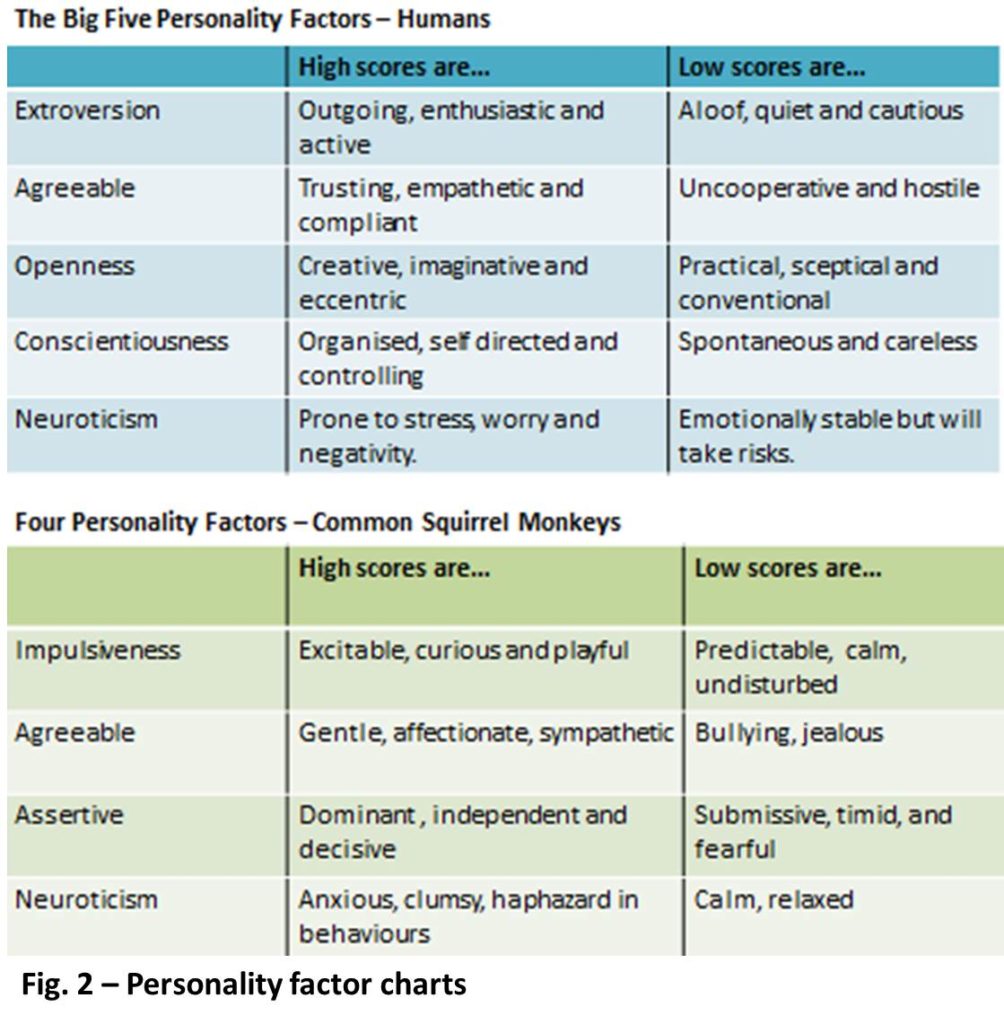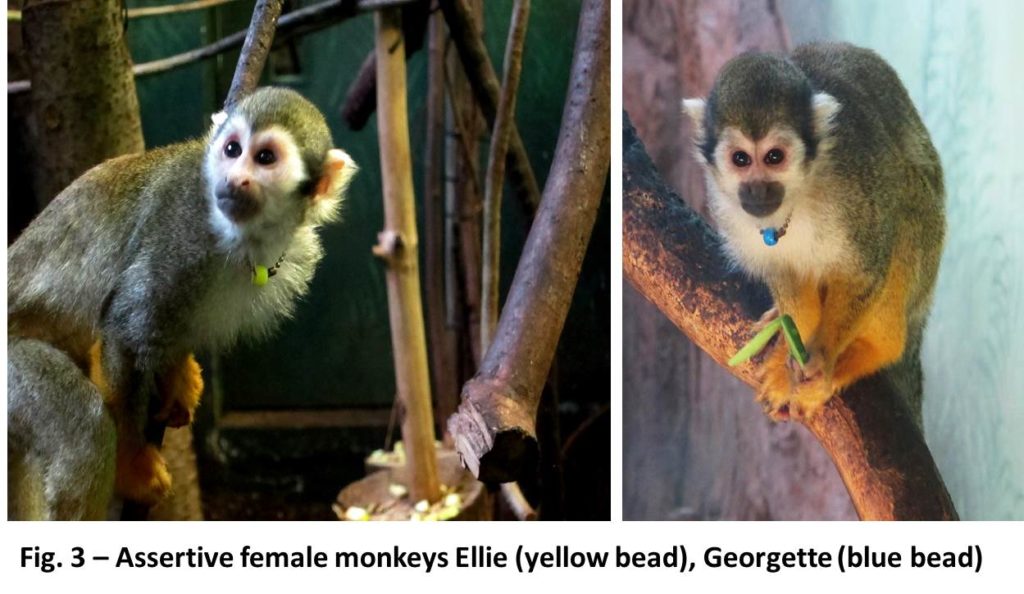 An animal’s personality can be defined as a consistent pattern of behaviour and thinking.
An animal’s personality can be defined as a consistent pattern of behaviour and thinking.
Twenty of our squirrel monkeys have been personality surveyed by our keepers. This entails the keepers giving our monkeys scores on certain characteristics in their behaviours. For example they look at traits such as sociability, curiousity and timidity (Fig 1).
These traits can then be categorised into broad personality factors. For humans we have five recognised personality factors, whereas the squirrel monkeys are seen to have four (Fig 2).
Some of our squirrel monkeys like Ellie and Georgette (Fig.3) have scored high in assertiveness, whereas others like Toomi and Salvador have scored higher in impulsiveness.
You are probably wondering ‘when does the poo come into this story?’ And the answer is now.
Vanessa Wilson from Edinburgh University has gained the personality profiles of our monkeys from the zoo keepers’ surveys. What she can now look to see is if these match up with specific genes in the monkeys’ DNA. The way we get the DNA from the monkeys is by sampling their faeces.
To be sure we match up the right monkey to the correct faecal sample we need to add a marker to their food. Glitter is perfect for this, in fact silver and green glitter seem to work the best (Fig. 4).
What we are looking for in the DNA  of our monkeys are variations in some very specific genes. The ones in question are named DRD4, 5HTT and MAOA. These genes are directly linked with either dopamine or serotonin systems in the brain (Fig 5).
of our monkeys are variations in some very specific genes. The ones in question are named DRD4, 5HTT and MAOA. These genes are directly linked with either dopamine or serotonin systems in the brain (Fig 5).
Dopamine and serotonin play a large role in animal behaviour and personality, so differences in these genes may allow us to see why some of our animals have different personality types.
 Similar research has taken place with other animals too, including elephants, orangutans, and dogs. The more species we study, the greater understanding we will have on the connections between animal genes and behaviour. This knowledge can then help us to ensure genetic diversity in captive breeding programmes as well as tailoring or animal care procedures for specific personality types.
Similar research has taken place with other animals too, including elephants, orangutans, and dogs. The more species we study, the greater understanding we will have on the connections between animal genes and behaviour. This knowledge can then help us to ensure genetic diversity in captive breeding programmes as well as tailoring or animal care procedures for specific personality types.



